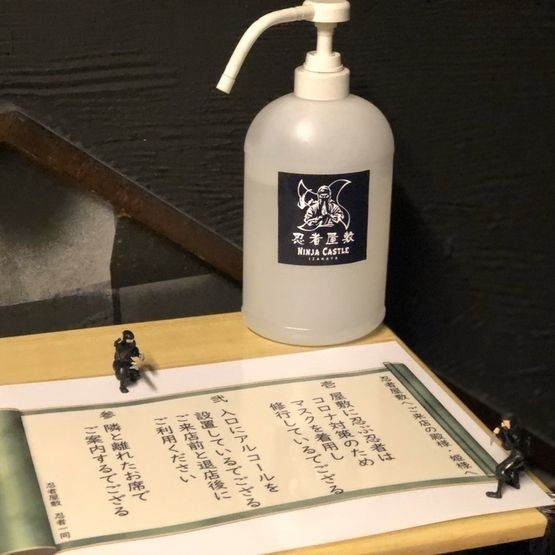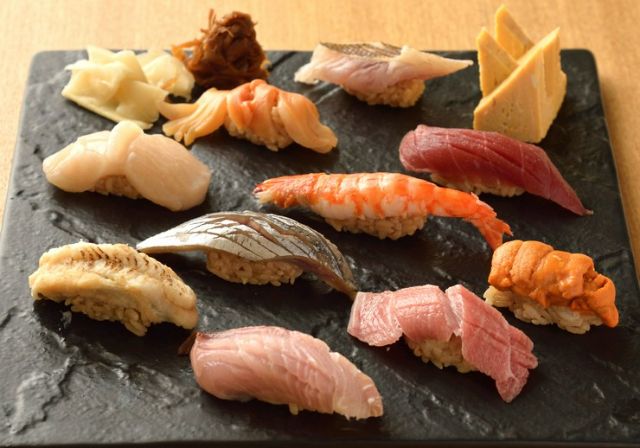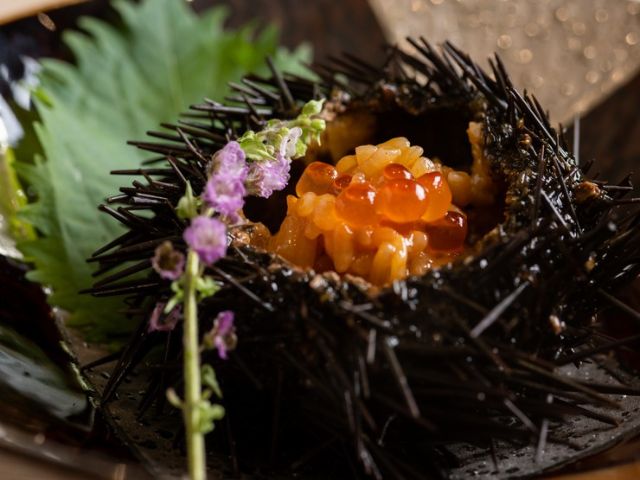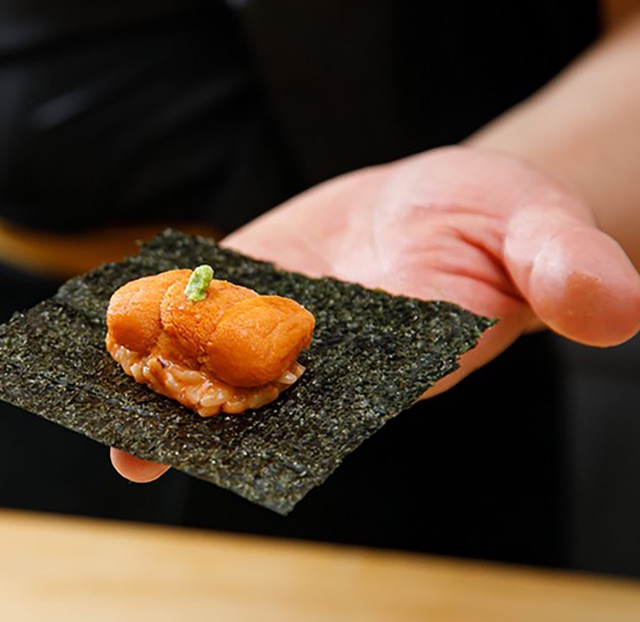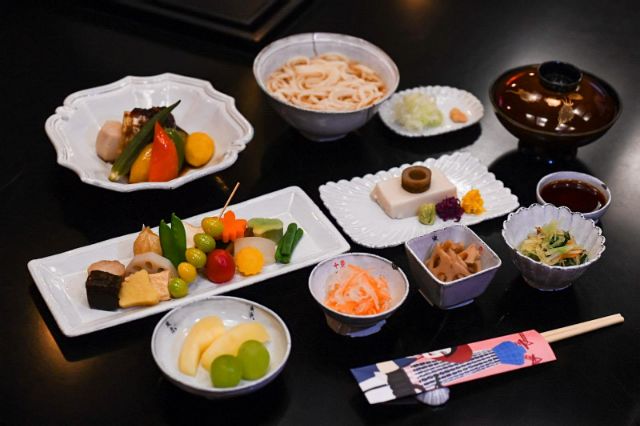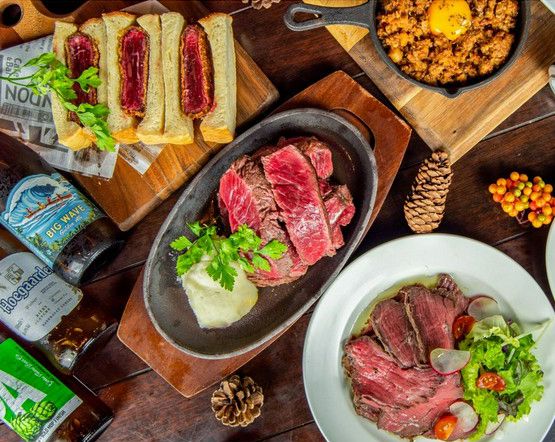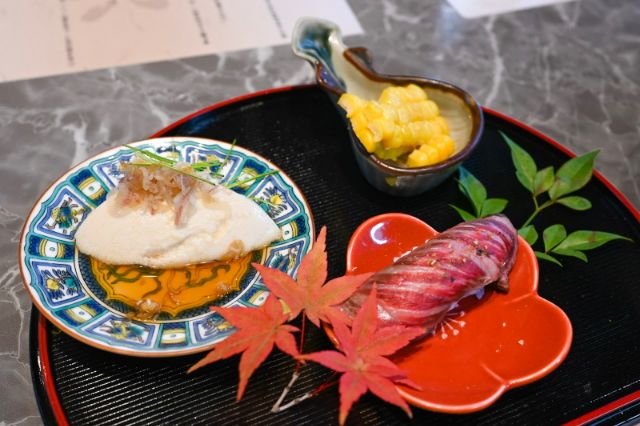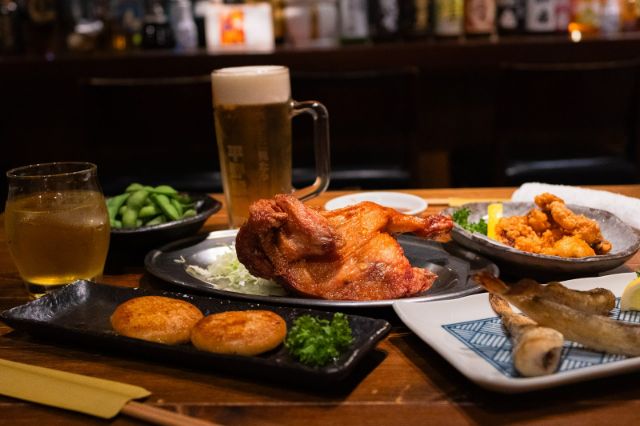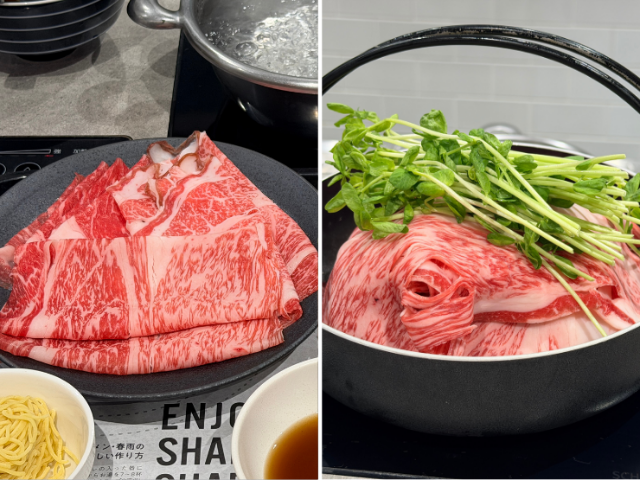What Is Edomae Sushi? Unveiling the Origins of Nigirizushi!
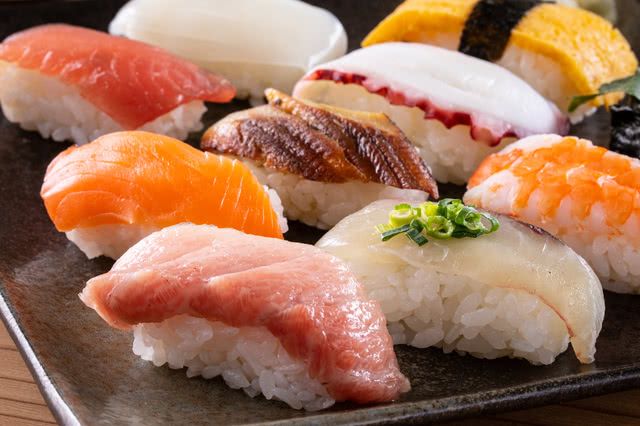
The History of Edomae Sushi

Although that may just sound like regular sushi today, it wasn’t until the 18th century, back when Tokyo was called “Edo,” that sushi began to take on its contemporary form.
During this time, Edomae sushi was considerably larger than the bite-sized portions we enjoy today. In fact, it was about the size of a fist! Rather than a haute cuisine experience, Edomae sushi served as a form of fast food available at street stalls, catering to the hunger pangs of the common folk.

In fact, the roots of sushi in Japan trace back to a fermented dish that starkly differs from Edomae sushi. Documents from around the 10th century mention “narezushi,” a dish in which salted fish is fermented together with raw rice. It was particularly prevalent in the Kansai region.
While modern nigirizushi features fish atop rice, narezushi utilizes rice to facilitate fermentation, and the rice itself is discarded before consumption. This "narezushi'' has persisted as a regional specialty, as seen in dishes like "funazushi" from Shiga Prefecture, and continues to be savored today.
From "narezushi,” where everything was fermented over time in a wooden box, sushi later evolved into "hakozushi" (beautifully shaped sushi with fish, shrimp, egg rolls, and so on, laid out into a wooden box), "makizushi" (rolled up sushi), and even "bozushi" (sushi made by placing rice and ingredients in a rectangular wooden frame and pressing from the top). Even today, when nigirizushi is eaten nationwide, these types of sushi are still commonly eaten in the Kansai region, especially in Osaka.
The Characteristics of Edomae Sushi

Today, you can savor nigirizushi no matter where you are in Japan. Yet, despite their similar appearance, the flavors of Edomae sushi and Kansai nigirizushi exhibit subtle distinctions.
The most notable contrast lies in the rice. The rice in Kansai nigirizushi carries a sweeter profile compared to that of Edomae sushi, owing to a higher sugar content. This is because many styles of Kansai sushi, like "bozushi,” are made to be relished after a period of time, perhaps between acts of a play or during an excursion. So, a greater amount of sugar is incorporated to prevent the rice from drying out.
Kansai nigirizushi also features more rice than Edomae sushi, so the rice is made more flavorful to keep the palate engaged.
In Kansai, it’s easy to get your hands on fresh white fish such as sea bream from the swift currents of the Seto Inland Sea. These fish pair well with sweet rice.
If you have the chance to indulge in nigirizushi in both Kansai and Kanto styles, take note of the nuances in the rice!

While historically, only the red meat of tuna was used due to its quick spoilage, today various tuna cuts, including "toro" (fatty tuna), have become popular choices for Edomae sushi.
Anago, in its prime season from mid-July to early September, is thoroughly boiled before being coated in a sweet soy sauce glaze. The succulent, fatty flesh delicately melts in the mouth. Making this requires considerable time and effort, involving the careful removal of the eel’s natural sliminess, precise cooking to maintain the meat's integrity, and the application of a sauce that takes ages to cook.
Kohada, a bluefish available from December to February, serves as another testament to a chef's expertise. Balancing the right proportions of vinegar and salt for the fish's preparation is a challenging task.
It can be argued that the additional steps taken to prepare the toppings for Edomae sushi showcase the unique qualities of the chef.
Recommended Edomae Sushi Restaurants
Sushi Onikai +1 (Tasuichi) (Nakameguro)

Take, for instance, the [Soy Marinated and Smoked Seasonal Fresh Fish]. This delightful creation involves marinating seasonal fish in soy sauce and smoking it right in front of the guests. The gentle rise of the smoke and its enticing aroma heighten the anticipation for the sushi. The fish's flavor intensifies, delivering a profound taste that lingers in your mouth.
The [Shrimp Tempura with Nori], with its visually stunning presentation, is a dish you shouldn't miss. [Tempura Miyashiro], which has earned a star in a global gourmet guide, is situated on the ground floor of this establishment. Their freshly fried shrimp tempura stars in this dish, delicately enveloped in rice and seaweed.
You can only have these offerings in the [Omakase Course] (11,000 JPY), as this is the only thing on the menu. Comprising 15 pieces of sushi and three small dishes, it showcases thoughtfully chosen seasonal delights.

The restaurant boasts an extensive selection of wines and sakes, allowing you to choose the perfect pairing for your sushi.
Sushi Onikai + 1 (Tasuichi)
Closed: Irregular
Average price: -
Access: 2 minutes walk from Nakameguro Station
Address: 3F, Plage Meguro, 3-9-5, Kamimeguro, Meguro-ku, Tokyo Map
More Details Reservation
Sushi Tsukiuda (Nakameguro)

The "Chu Toro" (medium-fatty tuna), which uses fresh domestic tuna, offers an irresistible, melt-in-your-mouth flavor.
The Boiled Octopus is meticulously seasoned with salt and soy sauce, not only to preserve its texture but also to enhance the natural flavor of the octopus. The result is a savory dish that isn’t too sweet, creating a perfect complement to sake.
A distinctive offering unique to this restaurant is the Boiled Abalone. The abalone is expertly cut into bite-sized pieces and served with soy sauce that has the essence of kelp and abalone liver boiled into it. Though quickly cooked, the abalone has a surprisingly soft texture and concentrated flavor.

Sushi Tsukiuda
Closed: Monday
Average price: [Dinner] 25,000 JPY / [Lunch] 15,000 JPY
Access: 10-minute walk from Nakameguro Station on Tokyo Metro Hibiya Line and Tokyu Toyoko Line
Address: 1-11-15, Higashiyama, Meguro-ku, Tokyo Map
More Details Reservation
Disclaimer: All information is accurate at time of publication.
Thank you for reading our article.
Our goal is to take your culinary journey to the next level by helping you find the best restaurant. With SAVOR JAPAN, you can search and make reservations for
the Sushi restaurants found in and around Jiyugaoka, Denenchofu, Nakameguro that fill your needs.
Discover more Sushi restaurants by area
- Tokyo Area
- Near Tokyo
- Kyoto and Osaka Area
- Hokkaido Area
- Northern Honshu (Tohoku)
- Central Honshu (Chubu)
- Western Honshu (Chugoku)
- Shikoku
- Kyushu
- Okinawa and Ryukyu Islands
Discover more restaurants to eat Japanese Cuisine by area
Keywords
Related Articles
New Articles
Categories
Cuisine
- Bars (23)
-
Japanese Cuisine (680)
- Kaiseki (46)
- Nabe (19)
- Okonomiyaki (24)
- Shabu Shabu (37)
- Soba (18)
- Sushi (137)
- Tempura (19)
- Teppanyaki (46)
- Shojin Ryori (3)
- Tonkatsu (12)
- Kushiyaki (10)
- Yakitori (45)
- Sukiyaki (35)
- Japanese Cuisine (342)
- Oyster (2)
- Sashimi/ Seafood (23)
- Unagi (eel) (32)
- Motsu Nabe (offal hotpot) (6)
- Mizutaki (chicken hot pot) (3)
- Oden (8)
- Kaisendon (seafood bowl) (11)
- Udon (2)
- Taverns(Izakaya) Cuisine (126)
- Western Cuisine (42)
- Italian/French Cuisine (94)
- Yakiniku/Steak (225)
- Chinese Cuisine (26)
- Ramen (Noodles) Cuisine (24)
- Cafe/Sweets (61)
- Other Asian Cuisine (5)
- Global/International Cuisine (7)
- Alcohol (46)
- Other (11)
Area
- Shikoku (10)
- Kyoto and Osaka (345)
-
Tokyo (463)
- Tokyo (289)
- Ginza (44)
- Roppongi (21)
- Shibuya (27)
- Shinjuku (46)
- Asakusa (20)
- Ebisu (12)
- Tsukiji (10)
- Tokyo Landmarks (4)
- Ueno (23)
- Akihabara (9)
- Ikebukuro (12)
- Jiyugaoka, Denenchofu, Nakameguro (9)
- Shimokitazawa (4)
- Kichijoji (3)
- Tachikawa (1)
- Omotesando, Harajuku, Aoyama (18)
- Akabane (1)
- Kagurazaka (4)
- Akasaka (10)
- Odaiba (2)
- Tsukishima, Harumi, Toyosu (3)
- Near Tokyo (101)
- Okinawa and Ryukyu Islands (58)
- Hokkaido (124)
- Northern Honshu (Tohoku) (31)
- Central Honshu (Chubu) (143)
- Western Honshu (Chugoku) (32)
- Kyushu (92)
Archives
- January 2026(6)
- December 2025(9)
- November 2025(4)
- October 2025(3)
- September 2025(6)
- August 2025(11)
- July 2025(19)
- June 2025(18)
- May 2025(34)
- April 2025(43)
- March 2025(30)
- February 2025(36)
- January 2025(26)
- December 2024(69)
- November 2024(31)
- October 2024(15)
- September 2024(39)
- August 2024(65)
- July 2024(31)
- June 2024(54)
- May 2024(61)
- April 2024(28)
- March 2024(31)
- February 2024(42)
- January 2024(32)
- December 2023(20)
- November 2023(5)
- October 2023(11)
- September 2023(7)
- August 2023(18)
- July 2023(8)
- June 2023(8)
- May 2023(18)
- April 2023(15)
- March 2023(1)
- January 2023(1)
- April 2022(2)
- March 2022(2)
- February 2022(1)
- January 2022(1)
- July 2021(1)
- March 2021(1)
- February 2021(1)
- December 2020(1)
- October 2020(1)
- September 2020(2)
- August 2020(10)
- July 2020(6)
- June 2020(9)
- May 2020(11)
- April 2020(8)
- March 2020(8)
- February 2020(13)
- January 2020(9)
- December 2019(24)
- November 2019(8)
- August 2019(14)
- July 2019(15)
- June 2019(18)
- May 2019(17)
- April 2019(16)
- March 2019(22)
- February 2019(22)
- January 2019(26)
- December 2018(34)
- November 2018(40)
- October 2018(32)
- September 2018(11)
- August 2018(8)
- July 2018(6)
- June 2018(9)
- May 2018(10)
- April 2018(21)
- March 2018(74)
- February 2018(39)
- January 2018(26)
- December 2017(60)
Keywords
- Omakase
- Accessible
- Affordable
- All-You-Can-Eat
- Amazing Scenery
- anime
- Art
- Autumn
- Awards
- Beer Gardens
- Breakfast
- Chef Recommendations
- Cherry Blossoms
- Chinese
- Close To Station
- Condiments
- Counter
- Coupon
- Crab
- Culture
- Dassai
- Dates
- delivery
- Early Summer
- Editor's Recommendation
- English Available
- Event
- Expo
- Fall Leaves
- Family-Friendly
- Famous Restaurant
- Famous Tourist Spot
- Fast Food
- festival
- fireworks
- Flower Farm
- Free Wi-Fi
- French
- Great Location
- Guide
- Hibachi
- hotpot
- How To
- hydrangea
- Hygiene
- Illumination
- Italian
- Izakaya
- Japanese
- Japanese alcohol
- jingisukan
- Kaiseki
- Kappo
- Kushiage
- Kushikatsu
- Kyoto
- Late-Night
- Lunch
- Manners
- matsusakagyu
- Michelin
- mizutaki
- Model Course
- monjayaki
- motsunabe
- Mt.Fuji
- Multilingual Menus
- Nabe
- Narita Airport
- New Year
- Ninja
- Noodle
- Oden
- Okonomiyaki
- omotenashi
- Onsen
- Osaka
- Osaka Station
- Photogenic Site
- pizza
- PR
- Private Room
- Ramen
- ranking
- Recipe
- Regional Cuisine
- Resort
- Rice Bowl Dish (Donburi)
- sacred places
- Sake
- Sakura
- Sashimi
- sea urchin
- Setouchi Area
- Shabu Shabu
- sightseeing
- Signature Dish
- Soba
- Solo Diners Welcomed
- Spicy Food
- Spring
- Steak
- Summer
- Sunflower
- Sushi
- takeout
- Teppanyaki
- Terrace Seating
- Tokyo
- Tokyo Experiences
- Tokyo Skytree
- Tokyo Tower
- unagi
- UNESCO
- Vegan
- Vegetarian
- Wagyu
- What Popular Gourmet Sites Recommend
- Whisky
- Wine Bar
- Winter
- Wisteria
- Workshop
- World Heritage Site
- World Writers
- Yakiniku
- Yoshoku
- Yuba
- Zen
Discover Restaurants By Area
-

Tokyo Area
Japan's largest city, Tokyo, is the center of culinary culture in Japan. Countless Tokyo restaurants serve every kind of food imaginable and the Toyosu fish market keeps restaurants stocked with the nation's finest fish.
-

Near Tokyo
Coastal areas, mountains and valleys surrounding Tokyo are bursting with tourist destinations, such as hot springs and ski slopes, where many unique foods are only available locally.
-

Kyoto and Osaka Area
The cities of Kyoto and Osaka, together with their surrounding areas, have greatly influenced Japan's culinary culture since the 7th Century. The region is renowned for its entertainment, Kobe beef, and wide-ranging traditional dishes.
-

Hokkaido Area
The island of Hokkaido is home to wide-ranging produce of the finest quality, such as rice, meat, vegetables, fish and fruit. Popular dishes from Hokkaido include robatayaki (food slowly roasted on skewers) and Sapporo miso ramen.
-

Northern Honshu (Tohoku)
The northern end of Japan's main island, Honshu, is renowned for its seasonal fruit and vegetables, nation-leading harvest of fish (especially tuna from Ohma), and delicious beef from Yonezawa, Sendai and Yamagata.
-

Central Honshu (Chubu)
Chubu is in the center of Japan's main island, Honshu, and its culinary culture reflects its position between Japan's western and eastern halves. Delicious Hida beef, world-famous Mount Fuji and many acclaimed sake breweries are in Chubu.
-

Western Honshu (Chugoku)
Chugoku, on the southwest of Japan's main island, is rich with diverse produce. Many of its products are praised as Japan's best, including Matsuba crabs from Tottori and oysters from Hiroshima. Its pears and muscats are also top grade.
-

Shikoku
The mild climate of Shikoku is ideal for growing citrus fruit such as sudachi. Shikoku is also famous for Sanuki udon noodles, huge yields of tiger prawn from Ehime Prefecture and the best torafugu (tiger globefish) in the country.
-

Kyushu
Western culture was first introduced to Japan through Kyushu, Japan's third largest island, where the influence of Portuguese and other western cuisine influenced the creation of a colorful culinary tradition.
-

Okinawa and Ryukyu Islands
Okinawa, Japan’s southernmost prefecture, is a treasure trove of distinctive dishes and drinks that have become popular throughout Japan, including Okinawa soba, unique sushi toppings and Awamori distilled liquor.
